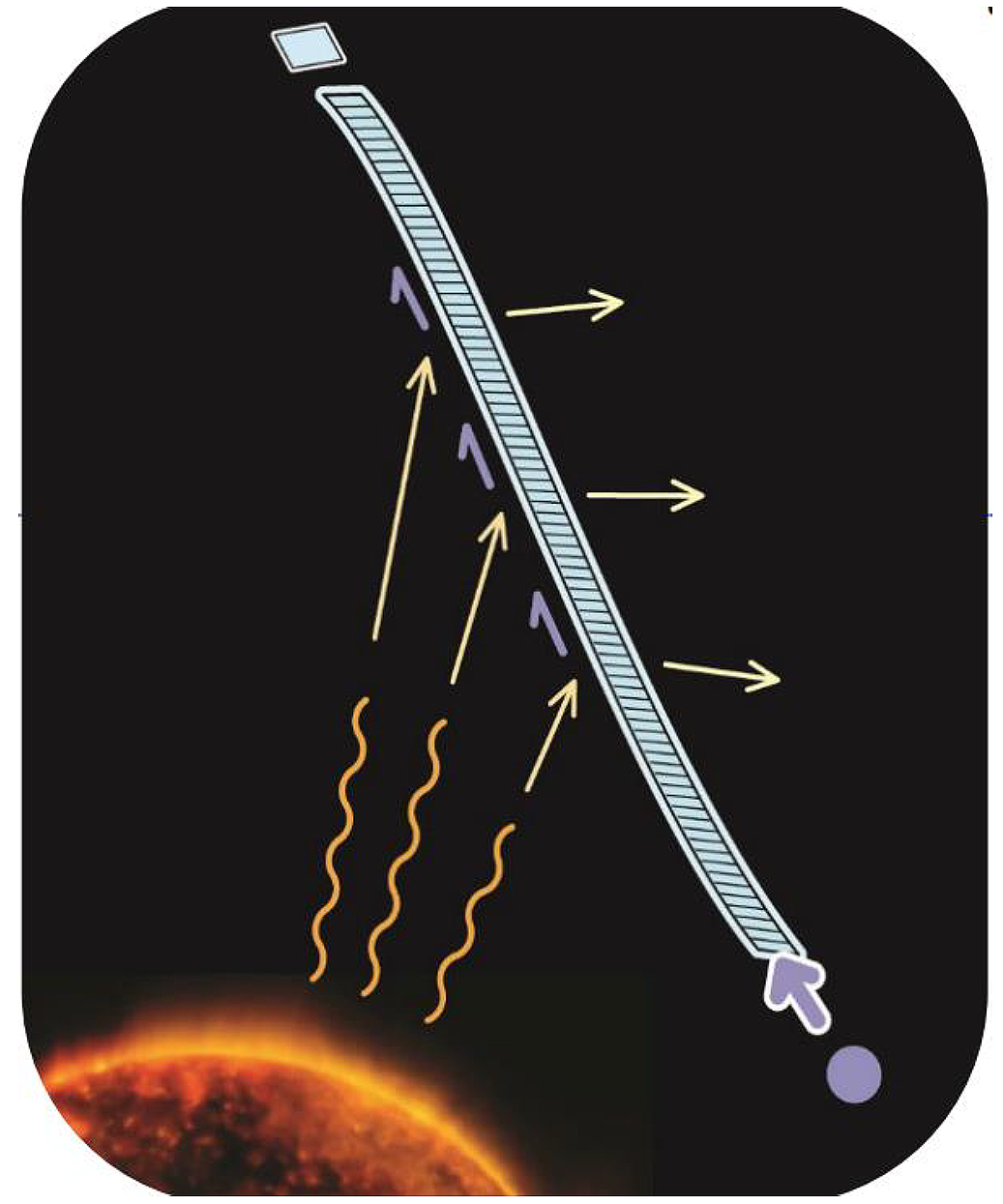Gyulaz Greschik
Tentguild Engineering Co
The ribbon sail is a film strip with diffractive grating that works with the surface-normal photonic pressure components on its two sides (originating from the incoming, reflected, and refracted light) canceled out. This occurs when the strip is straight and properly oriented with a filt from the direction of illumination; then the thrust aligns with the ribbon and propels it toward its leading end. If the rear is restrained by the inertia of a payload, then tension builds up along the strip to the force that tows the payload.
As the operational state is inherently stable, no structural support is needed and the ribbon itself channels propulsion to the payload. The sail is navigated by re-orienting it from one equilibrium state to another, with steering elements, e.g., at the leading end. Stowage is also simplified: the linear, thin, and uniform structure permits trivial methods of stowage such as zig-zag packing or roll-up. Consequently, stowage voids can be negligible, allowing the package to approximate the otherwise unapproachable theoretical limit of net film volume.
Freed from the structural overheads and complexities that severely limit the prevailing approach to solar sail engineering, ribbon thrust performance will also approach the theoretical upper limit of net film efficiency. This is orders of magnitude above what’s achievable with customary technology and, until now, belonged in the realm of complex futuristic sail concepts.
Scaling merely requires additional ribbon length, and is not structurally constrained.
The innovation’s unparalleled benefits will dramatically improve performance and engineering budgets for any mission that needs a thrust component lateral to the light flux. Solar polar observation platforms, at the focus of the present study, are prime examples. However, many other missions (tugs for orbital debris removal, planetary defense, some interplanetary probes and transport, etc.) will also profoundly benefit because they also often rely on lateral thrust vectoring.
As the ribbon represents an entirely new paradigm, the understanding of the hurdles to overcome for realizing its breakthrough advantages will evolve as its study progresses. However, it is apparent that the stability and robustness of its configuration and sensitivity to perturbations (to imperfections and to transient effects from deployment and navigation/control) are among the potentially critical bottlenecks. The feasibility study here proposed will primarily focus on these.
Analysis methodology will be developed to assess the ribbon’s response to effects and excitations. Means for steering and control will be evaluated, imperfection and perturbation sensitivities will be examined. Practicable solutions will be developed and applied to a solar polar observation mission design which will be developed with a near-term space technology demonstration in mind. Partners will be invited for subsequent phases if feasibility is confirmed, and hardware development toward a simple space demonstration will proceed.


































